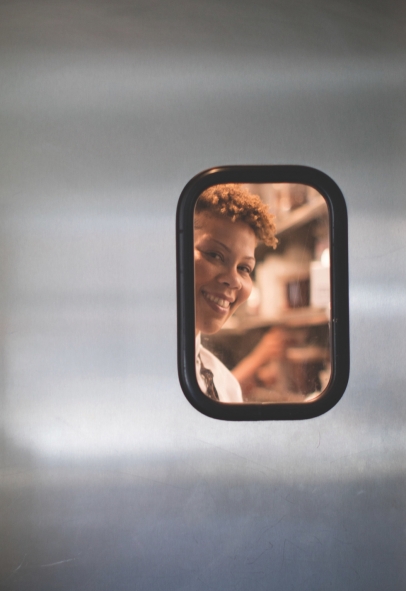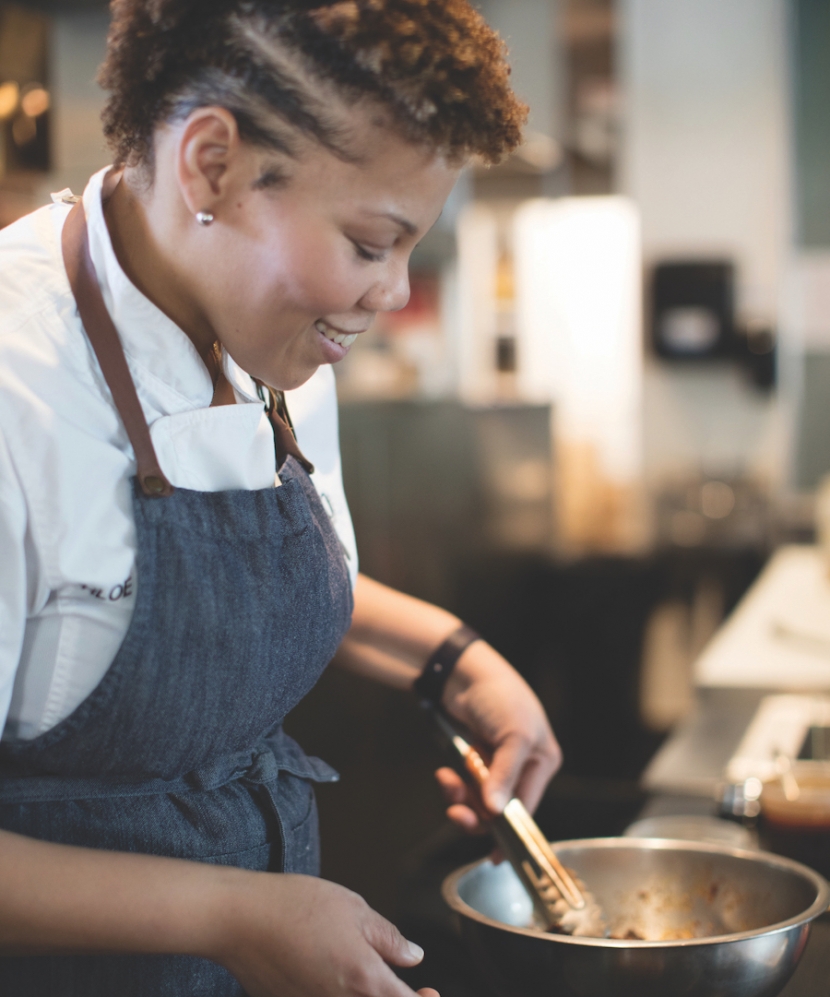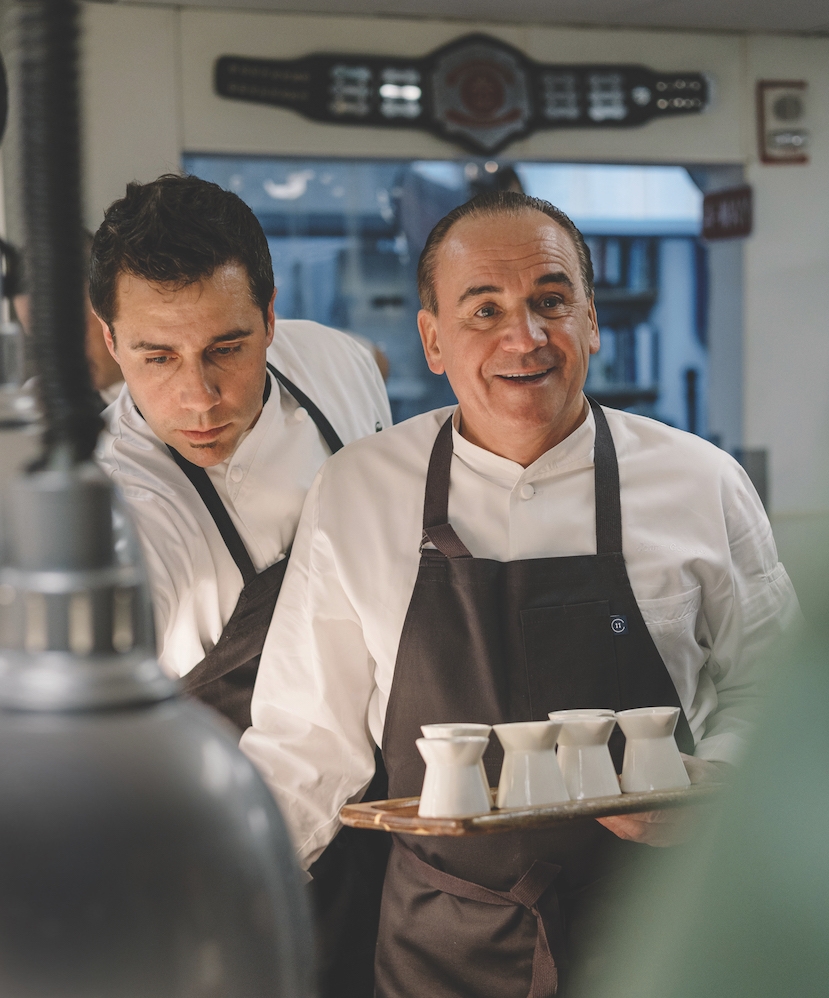Q&A: Cooking Globally, Thinking Locally
In the worldly culinary landscape of the Roaring Fork Valley—yet one that is quite small—local and visiting diners benefit greatly from the many guest chef opportunities at area restaurants. Offering diners exciting new menus and talent is also a good thing for the restaurants, as is the exchange of knowledge that inevitably takes place between visiting and staff chefs. We talked to three guest chefs invited by two local restaurant groups—the venerable Little Nell having arguably Aspen’s most robust and impressive guest chef program, and restaurateur Mawa McQueen designing a pop-up series that brought thoroughly unique cuisine while benefiting local nonprofits—to soak up their wisdom on local food and other things they’ve learned during their culinary careers.
Chloe Gould is a chef, educator, food translator, and owner of DixiePura Kitchen, a mobile pop-up that has her traveling all over the country to food events, conventions, and guest chef opportunities. In March, Gould joined local chef and restaurateur Mawa McQueen as a guest chef for special events at Mawa’s Kitchen and Mawita, where she introduced a local audience to her unique style of Southern-Asian fusion cuisine.
Q: How do you define, use, and think about local food?
CHLOE GOULD: First, that it comes from no farther than 150 miles. Because the flavor profile I use in my cooking is Southern-Asian fusion, my flavors come from overseas but they’re also local, since my background is Southern. So collard greens and Swiss chard grow in my neighbor’s garden [in Chicago]; my friend also grows lemongrass, Thai basil, Thai chiles … I make my own chile paste now. One of the only things I get from outside the area is fish sauce. Using local foods helps on food costs. You don’t have all that travel, so the products are more sustainable. And you know you’re getting a fresh product—you know who’s growing it or what’s going into it. If you’re buying it from next door you’re preserving as much of the nutrients as possible. It’s also an educational moment. I teach how to harvest and use food in Chicago public schools, and that’s important because Chicago has a lot of food-desert neighborhoods, where they don’t have grocery stores with local fresh vegetables.
Q: What have you learned about local food from your travels?
CG: I moved to Singapore in 2014 to teach [Western cuisine studies]. I got there during the Chinese New Year, and every dish they served had meaning. It made me dive into my own culture, because how I was brought up we never learned the history behind our food, we just ate it. In Singapore, women eat bird’s nest soup to make sure the womb is healthy. In my culture, we eat black-eyed peas for good luck. Corn bread is gold for us. In Asia they have a prosperity salad with gold coins—wontons that symbolize gold. There are so many similarities; we may use different foods, but we all connect in the same way. My whole goal with starting to cook Southern-Asian fusion was to translate those Asian flavors to my community. Because they would never have picked up fish egg curry otherwise. They don’t relate to it. So it was me using what we grew up with to translate it to them through the Asian flavors.
Q: With a guest chef experience, what is the exchange of knowledge that goes on?
CG: We get to feed off each other, to build community with each other. The exchange of information is building that community, talking to each other, and breaking bread together. It’s a true connection. All the chefs I’ve worked with have shared everything. Nothing is closed.
Q: What do you want people to come away with after experiencing your cooking?
CG: A sense of community, with culture. Elevation of Black food. Oftentimes Black women don’t get recognized, and I think it’s coming along, but there’s space for everyone. And food is translatable to everything. That’s why my mantra is “bringing it back to the table, one dish at a time.” Because you can talk about anything over food, because we relate to it. You don’t have arguments over food, right? It brings you together. I want to create a space where everybody is welcome, a community where everybody can learn from each other. Food brings togetherness; it brings compromise, thoughtfulness, meaningful conversation, appreciation.
Jean-Georges and Cédric Vongerichten are indisputably the most prolific father-son chef-restaurateur duo in the world. With nearly 50 restaurants between them (a few in which they work together), food and dining are undoubtedly a family affair. Jean-Georges’ brother, Philippe Vongerichten, directs operations at two of his New York City restaurants, and Cédric’s wife, Ochi, is his business partner and the face of their two restaurants (so far) in the Big Apple. Born and raised in Alsace, France, Jean-Georges has cooked all over the world; his restaurants regularly show up on best-of lists. Cédric, born in Bangkok and a Culinary Institute of America graduate, is catching up to his dad with his global culinary experience. Father and son, along with their families, were in Aspen in March for guest-chef stints at The Little Nell and Ajax Tavern.
Q: With restaurants and restaurant experience all over the world, how do you define, use, and think about local food?
JEAN-GEORGES VONGERICHTEN: Where you live is what you eat. We are a global company that’s locally based—we are always working with local food. When we opened a restaurant in Japan [JG Tokyo], we brought 20 new recipes but came back with 40 new ideas. So traveling, for us, is an inspiration; we’re always eating local. The first thing I do when I arrive somewhere I don’t know, I drop my luggage and go to the market—to see how people live and what they eat.
CEDRIC VONGERICHTEN: I think about local as seasonal, whatever is local in that specific place and time. You submerge yourself in the local culture. And you can use local products with Indonesian food; we try to use as much local as we can.
Q: What are your favorite ingredients?
CV: My favorite ingredient is something I learned from my father: the use of chiles. There’s many different types, but a little hint here and there makes dishes so exciting. Chiles are very important in our cuisine.
J-GV: Probably my favorite ingredient is ginger; it goes with everything: beverages, fish, and meat … In Kyoto they have amazing carrots, because the soil is so sandy. In Alsace [where I grew up], all I want to eat is choucroute (sauerkraut). And when I’m here in Aspen, I think about Christmas trees everywhere—I would use pine needles.
Q: In terms of local and global foods, how have things changed in the time you’ve been cooking?
J-GV: I started cooking in 1973, so it’s been 50 years. In my time, you had to travel to learn about different food. In France, I had to change regions to learn about tomatoes, basil, and rosemary; there was nothing like that in Alsace. The only herb I knew growing up was parsley. Today you go to the internet and press tamarind and you know where it grows, where it comes from, and there are 50,000 recipes attached to it. It’s so much easier today. To learn a new cuisine, how to use new ingredients, it took me 10 years. Maybe it’s three years now, or a year and a half—even six months. Which is dangerous, because now kids don’t know about seasons anymore, because you have strawberries in the supermarket year-round. In my time strawberries were two months a year, that’s it.
Q: What does food mean in your family?
J-GV: I grew up with three generations in the same house. There were always 14 people around the table. Today, we still do family dinner every Sunday night, no matter what—eight to 12 of us. Sometimes, somebody doesn’t want to do it—but then I get a text in the middle of the day: ‘Where are we going?’ And I still run to work every morning. If you love what you do, it’s easier. ❧







